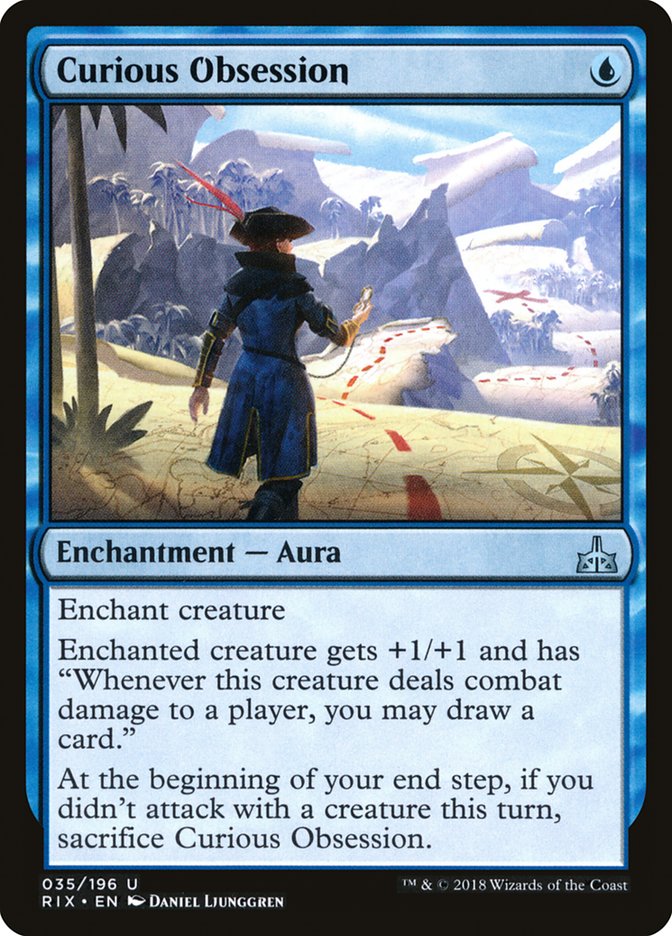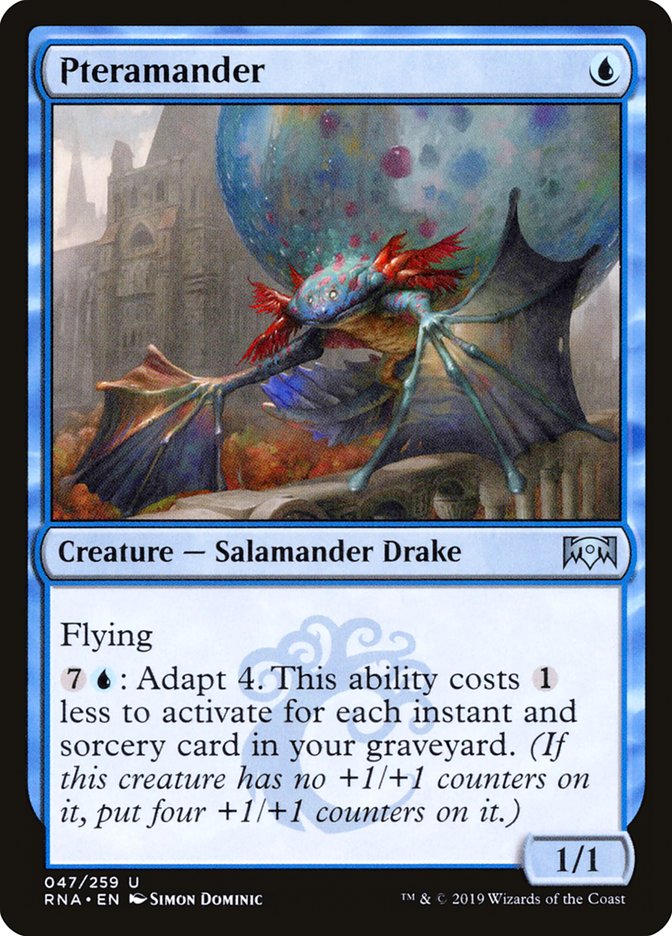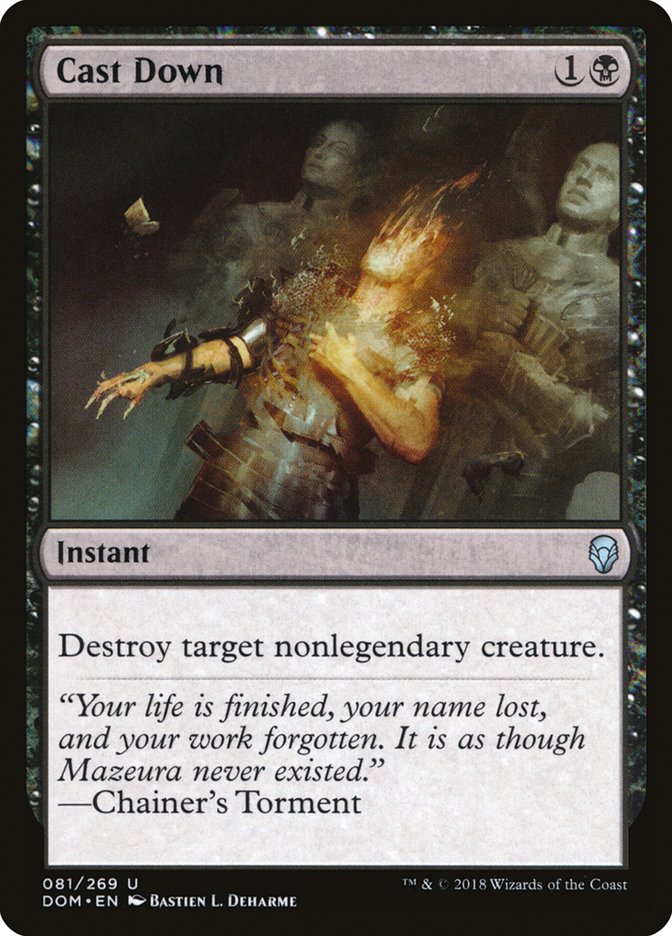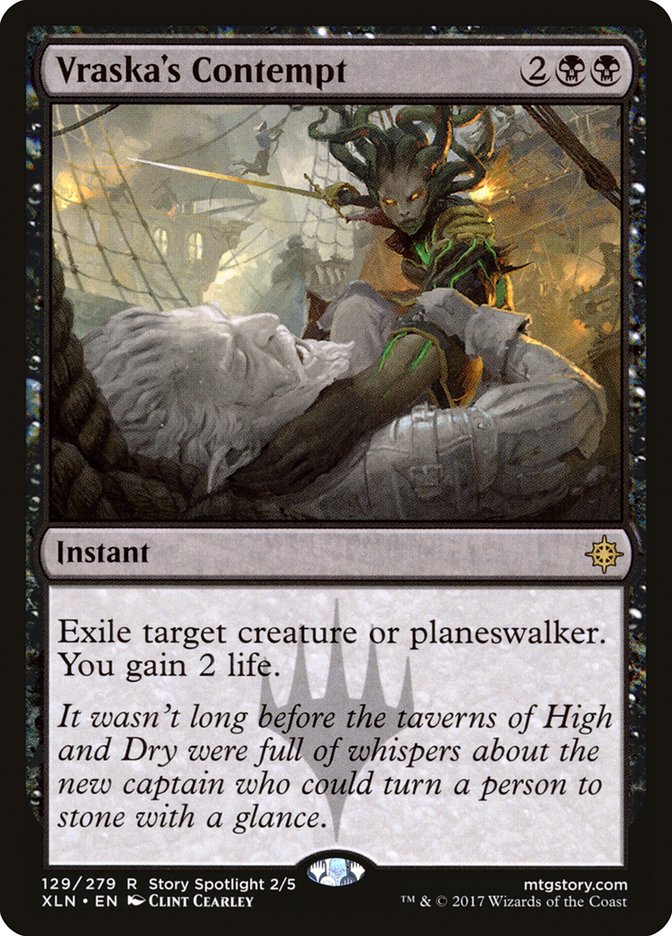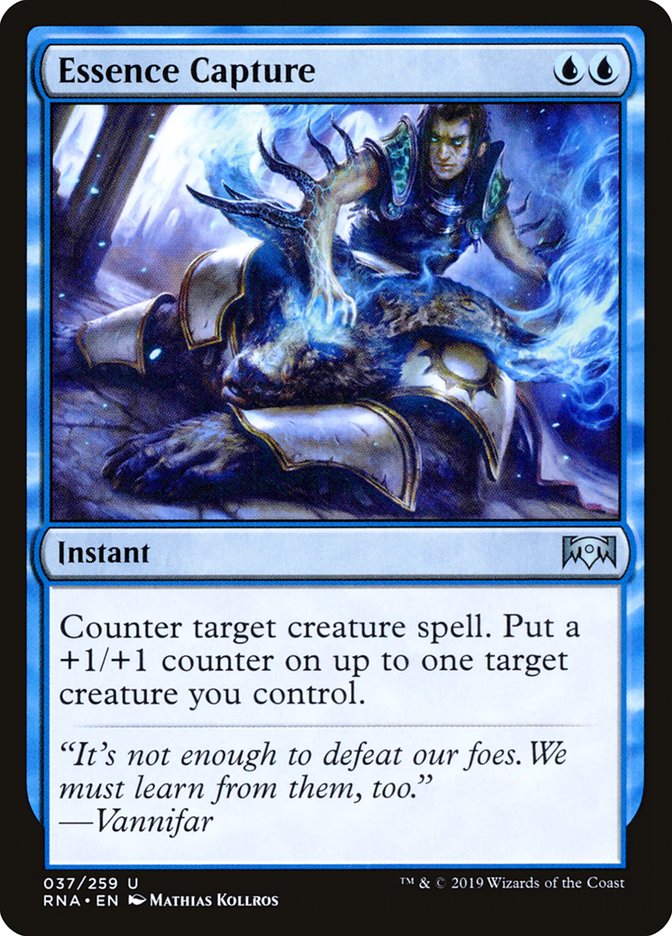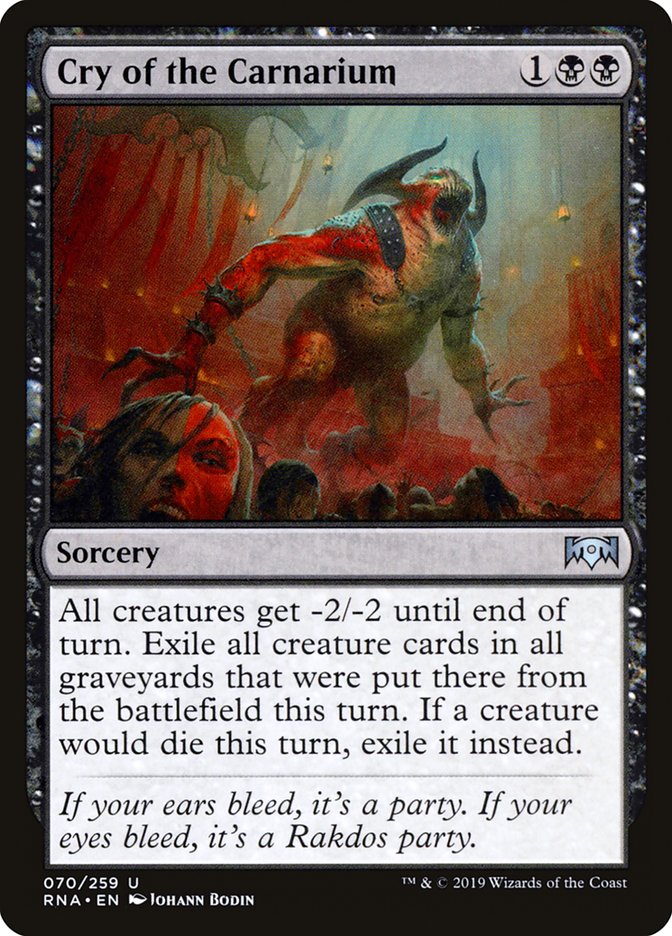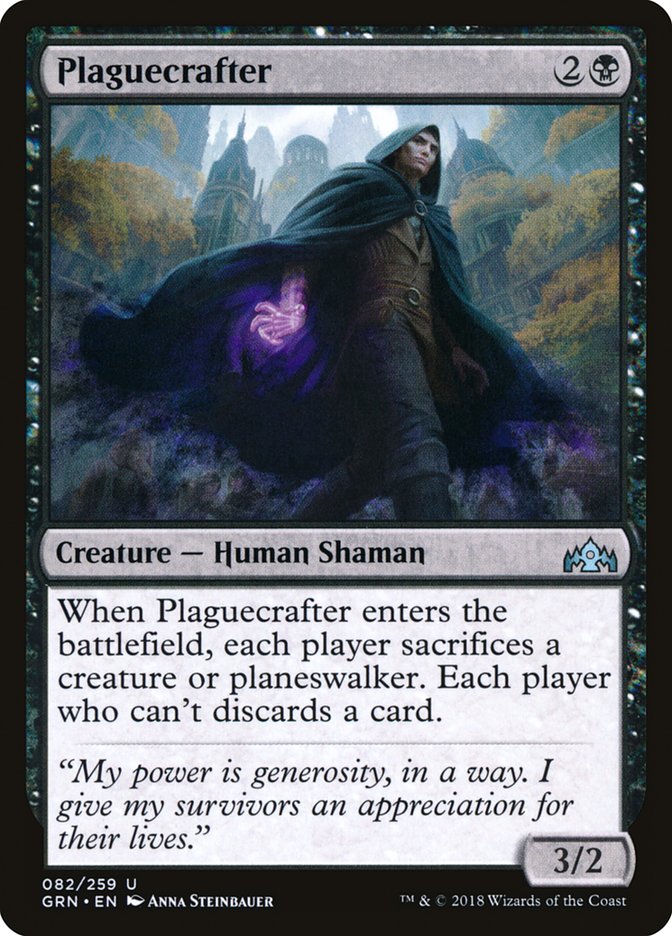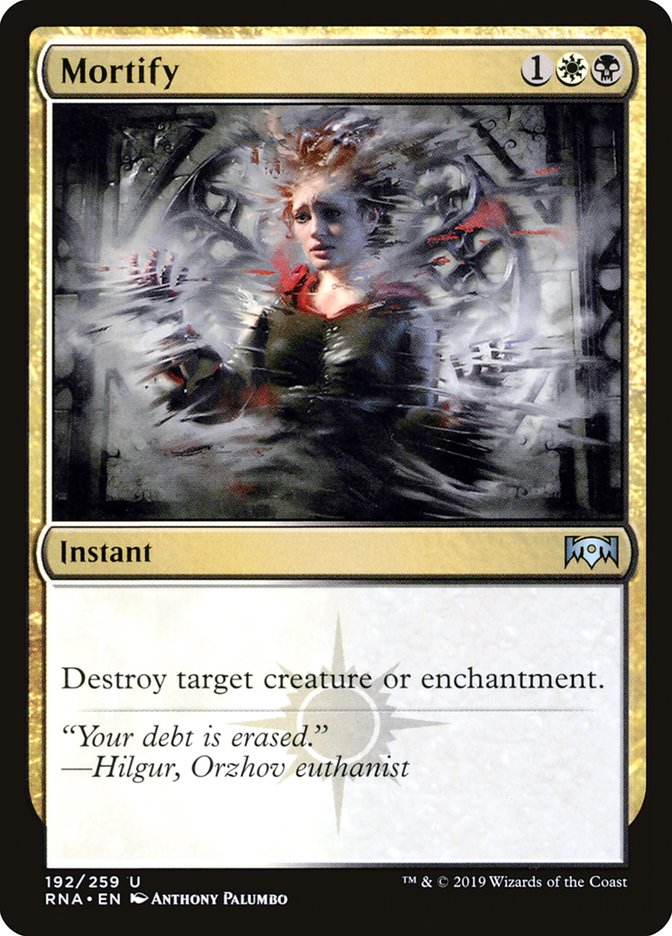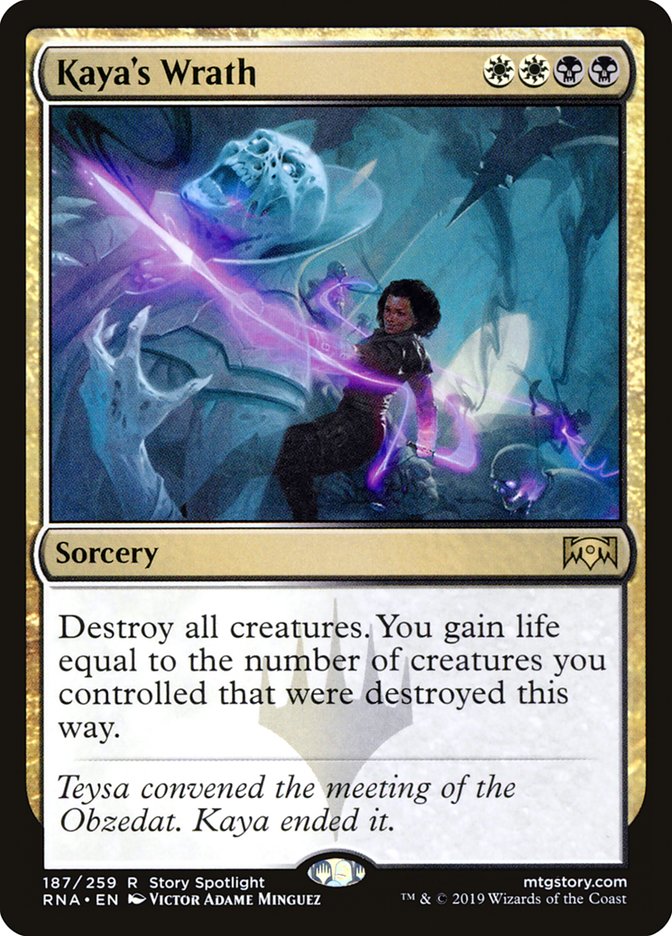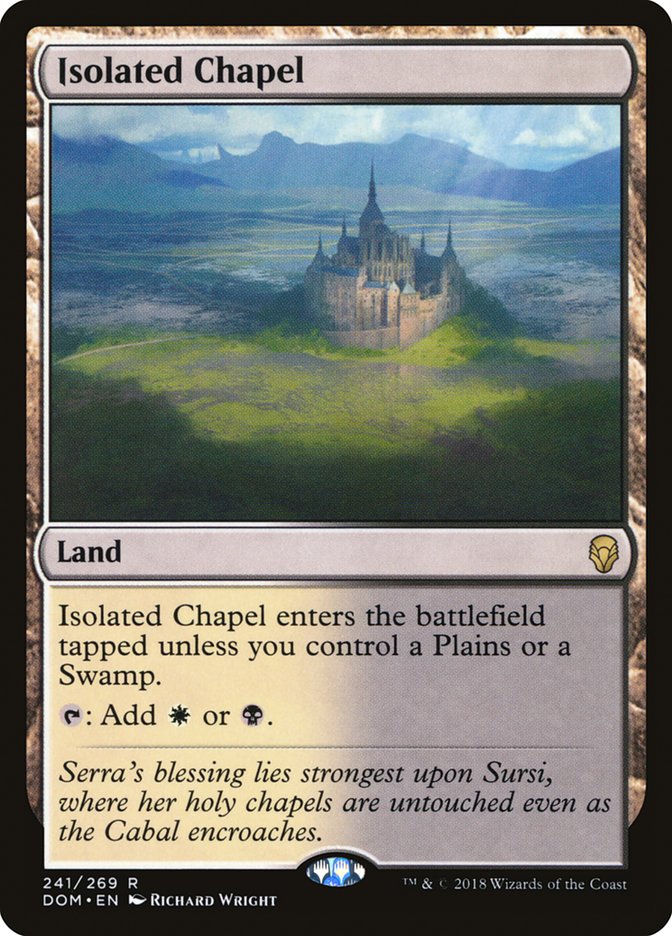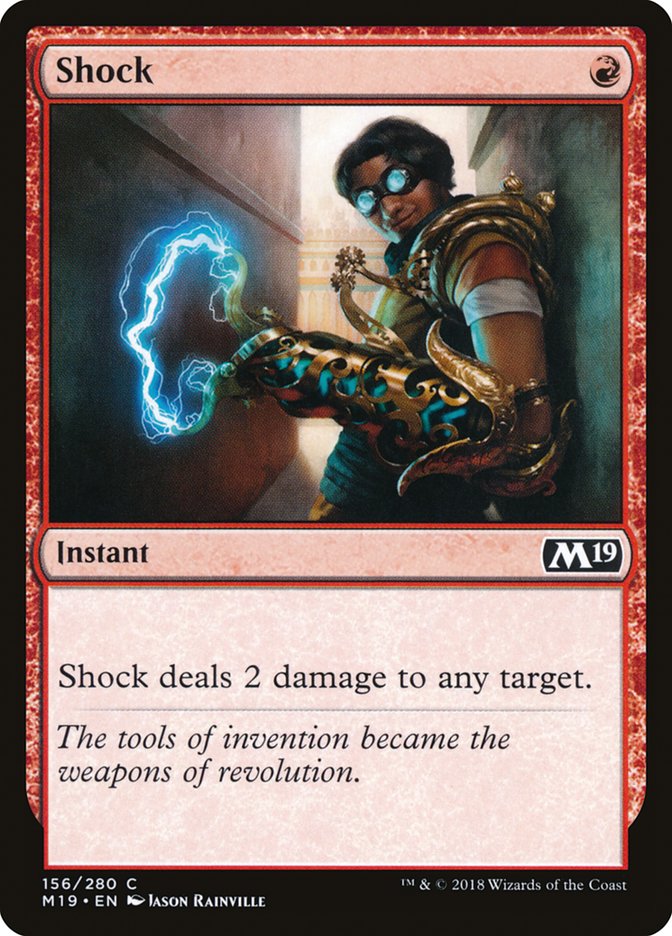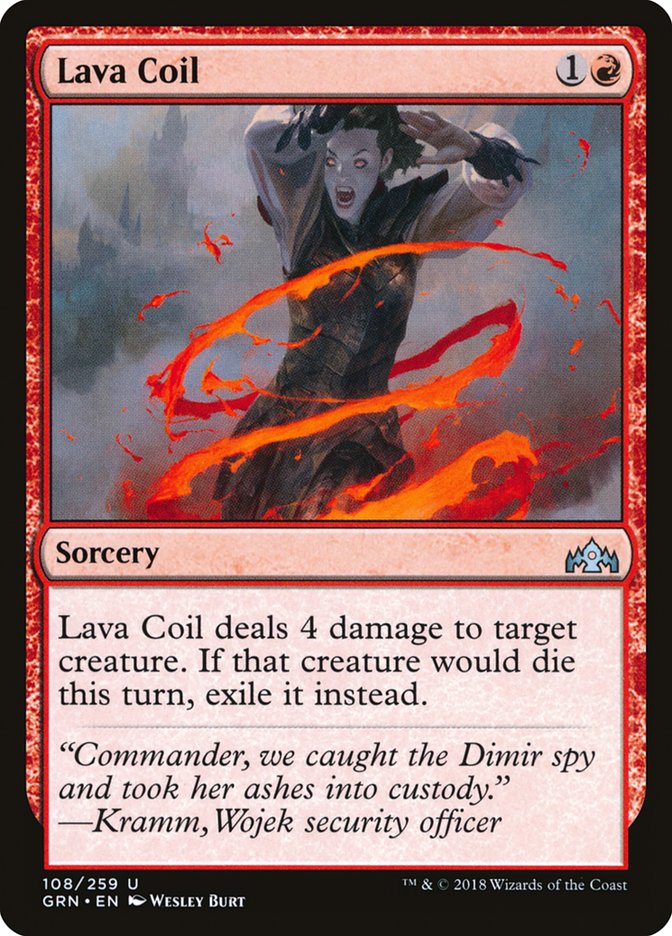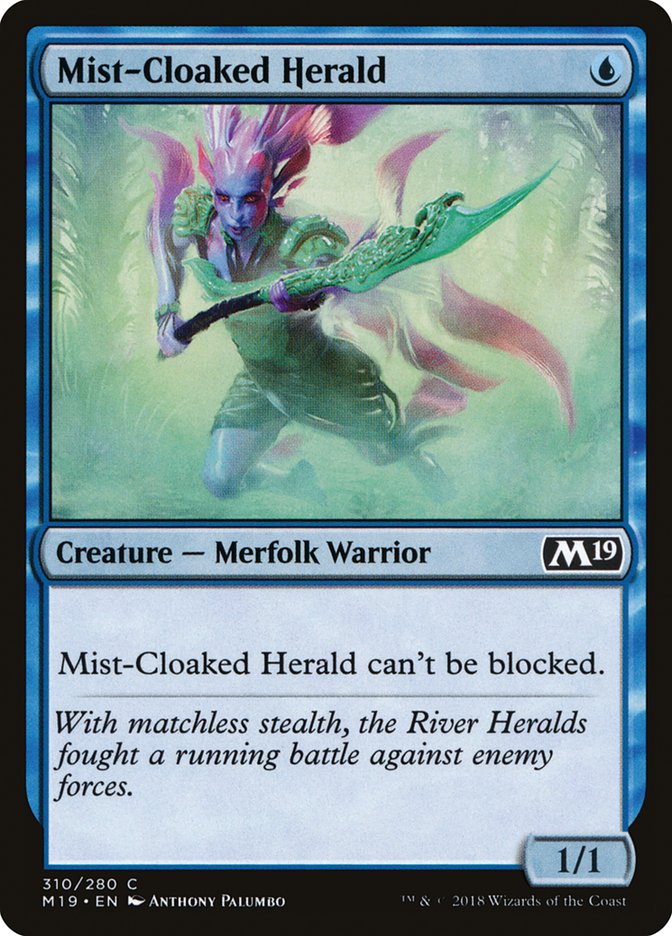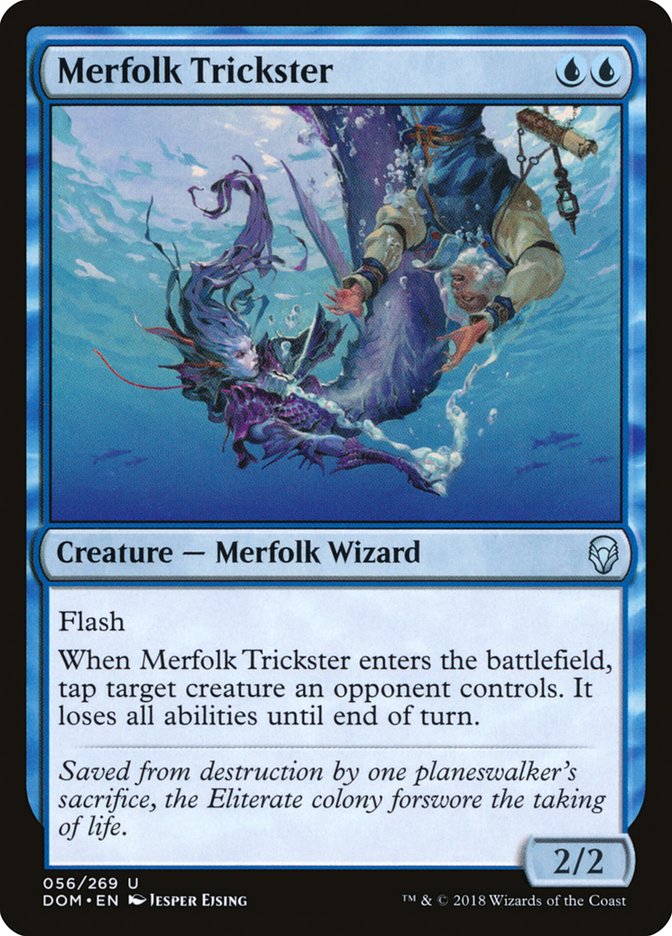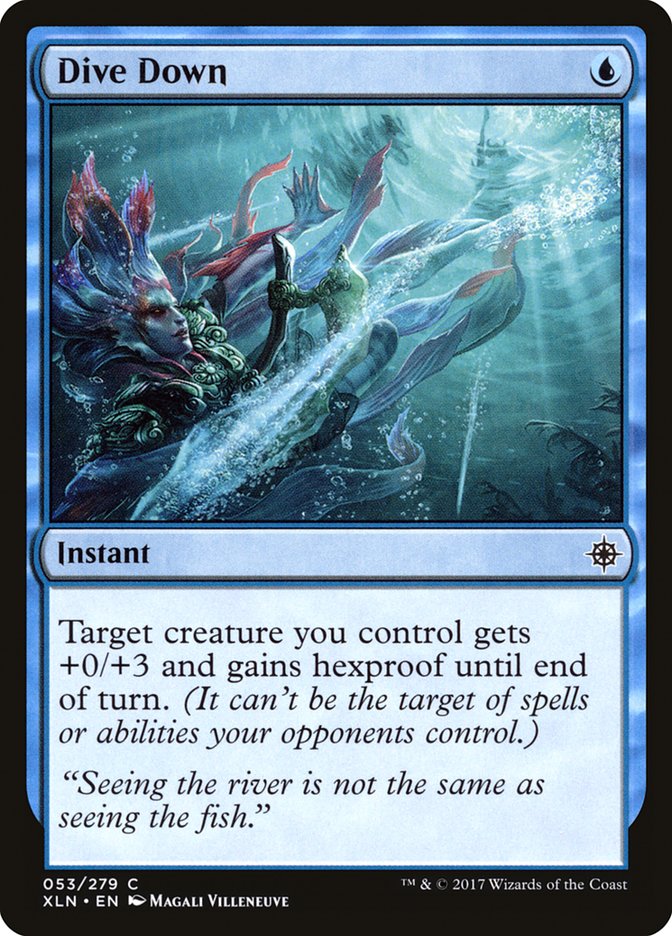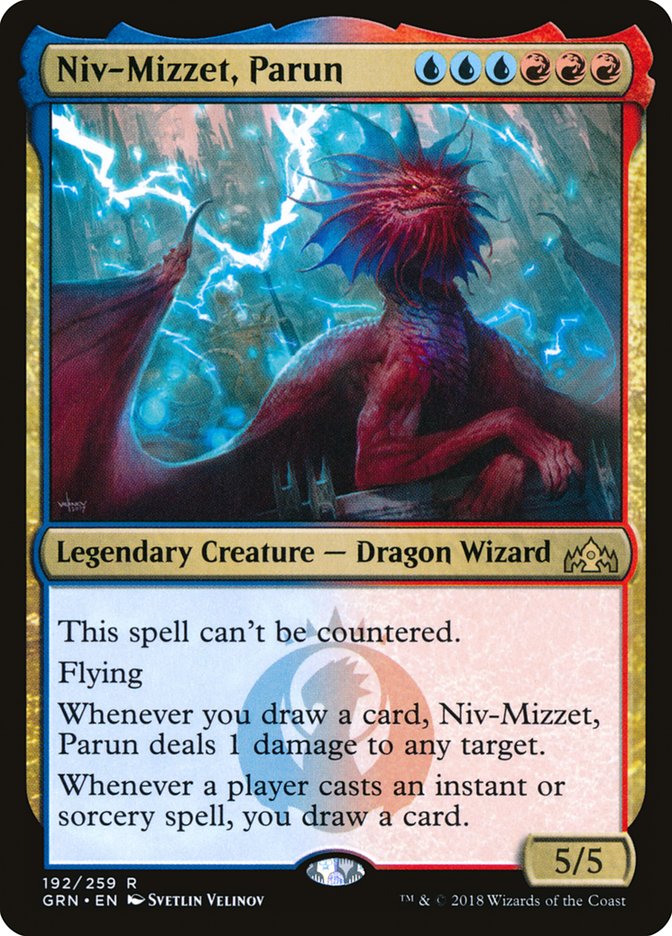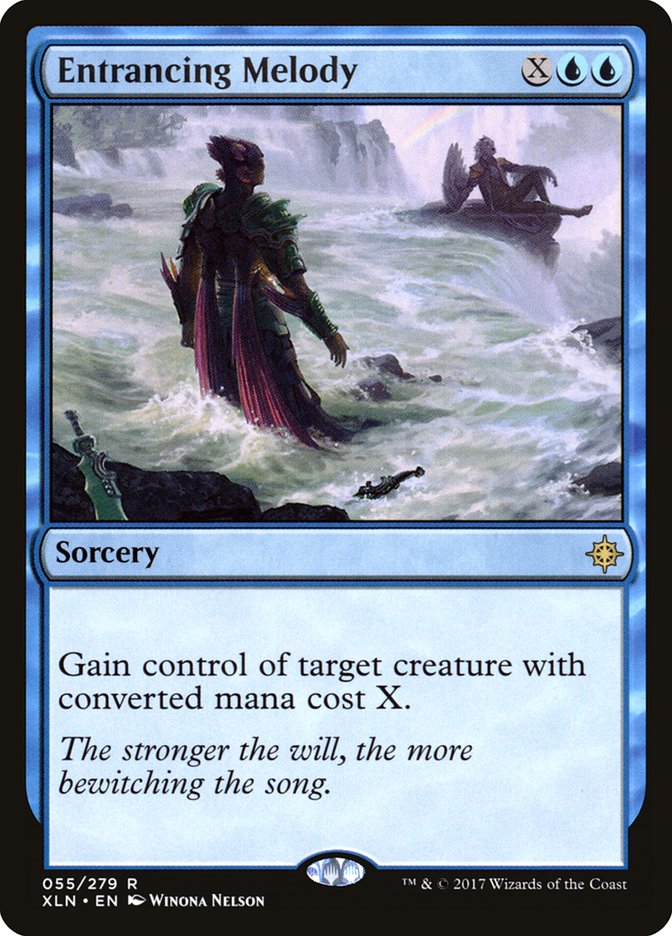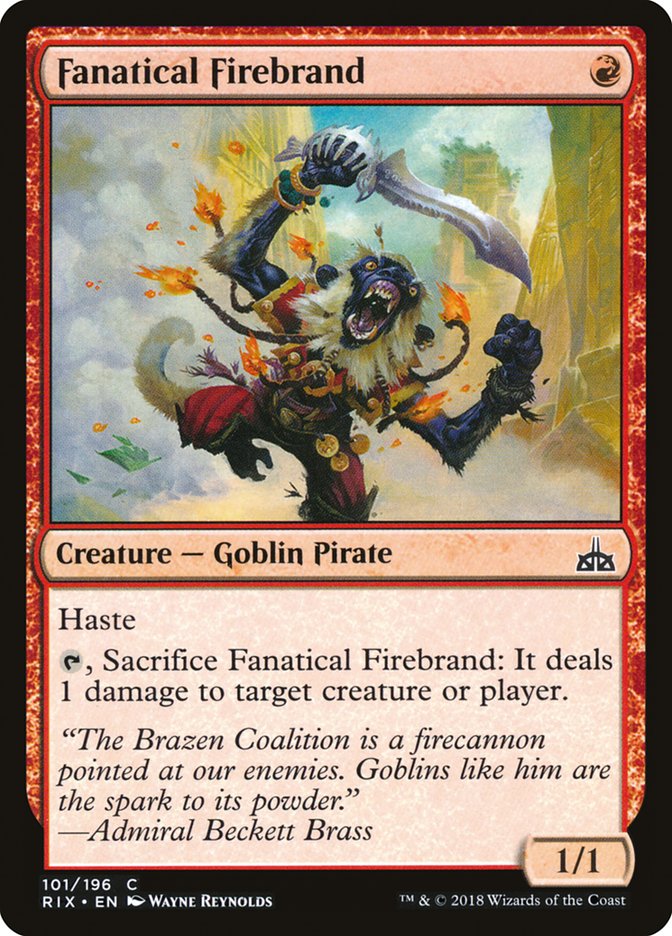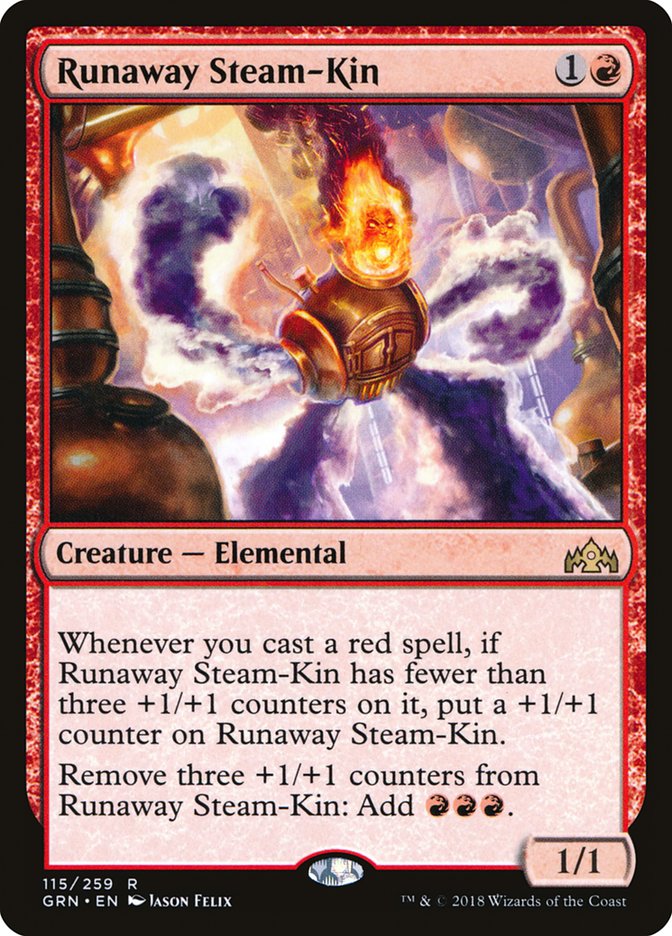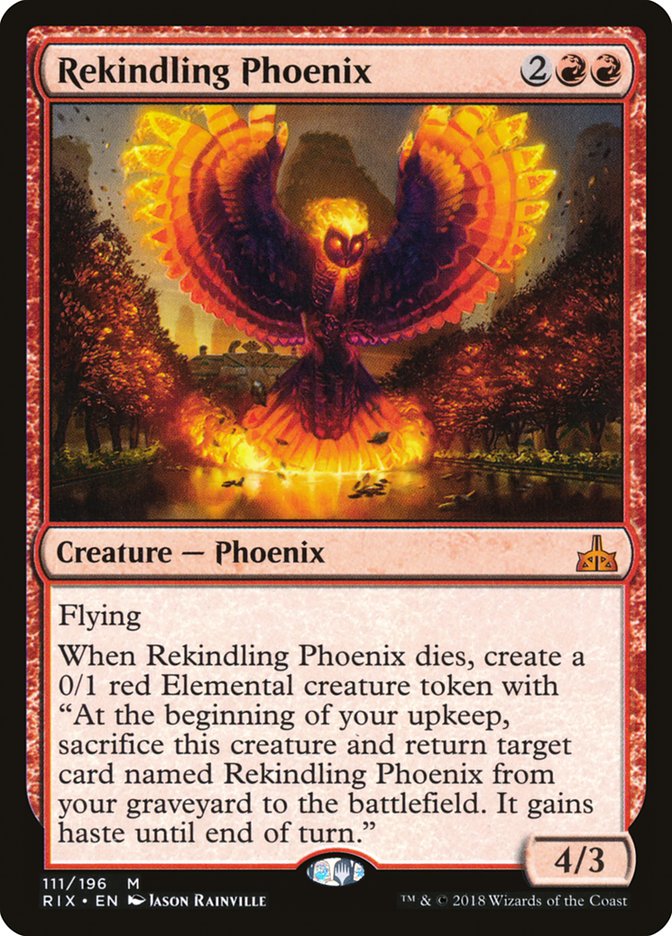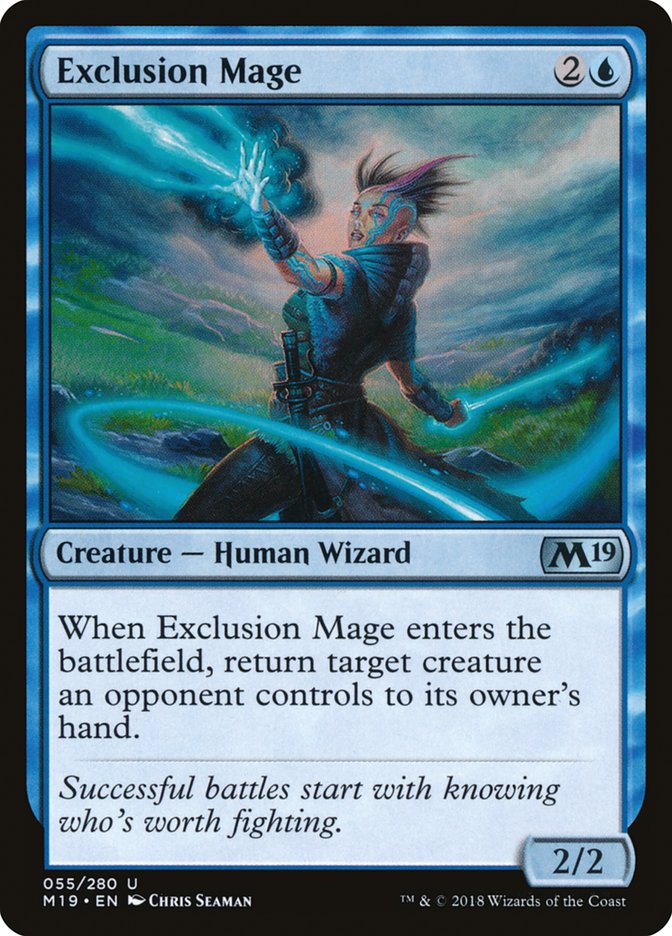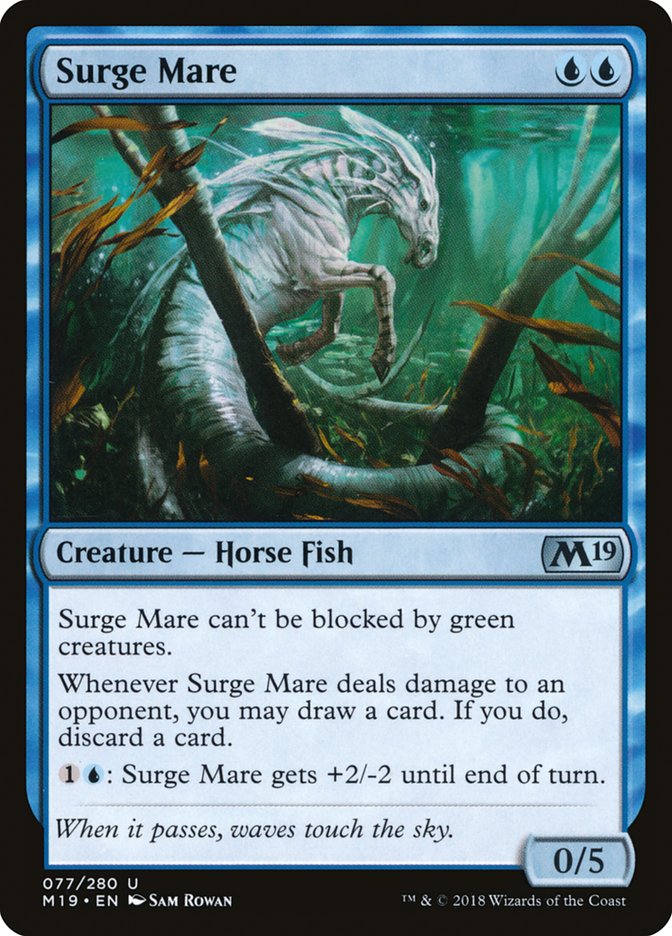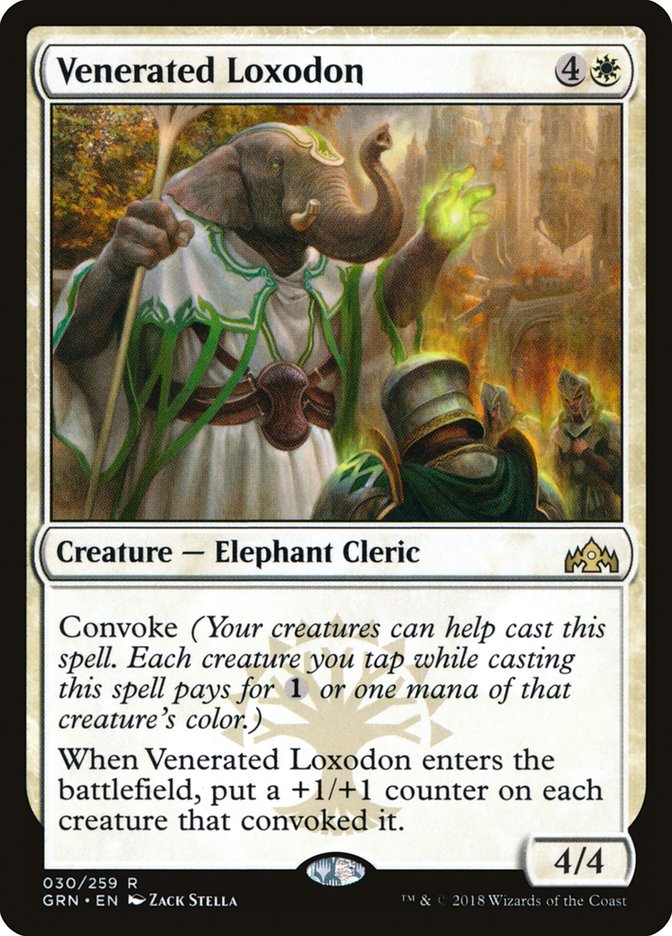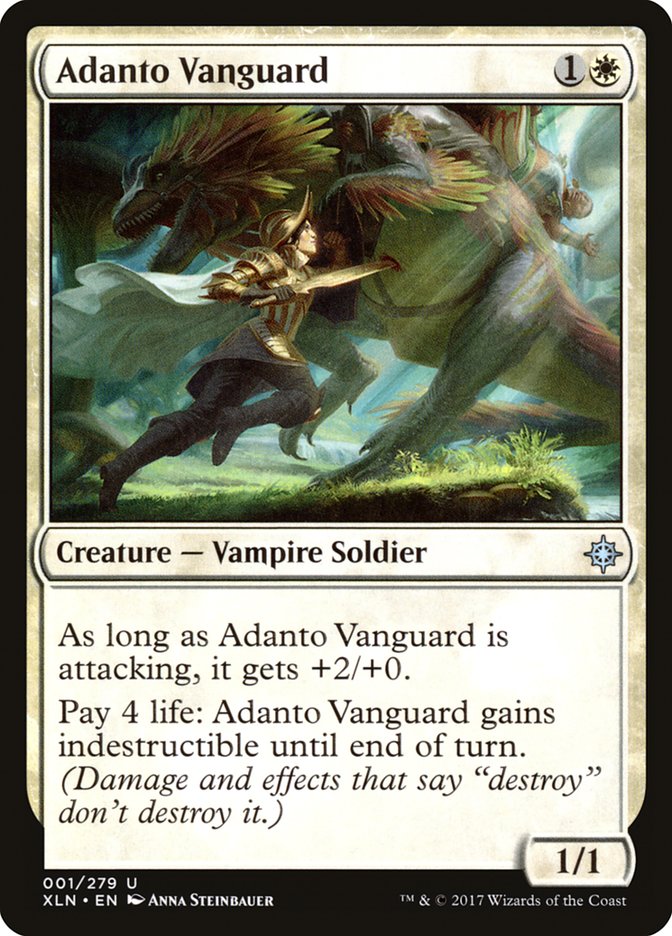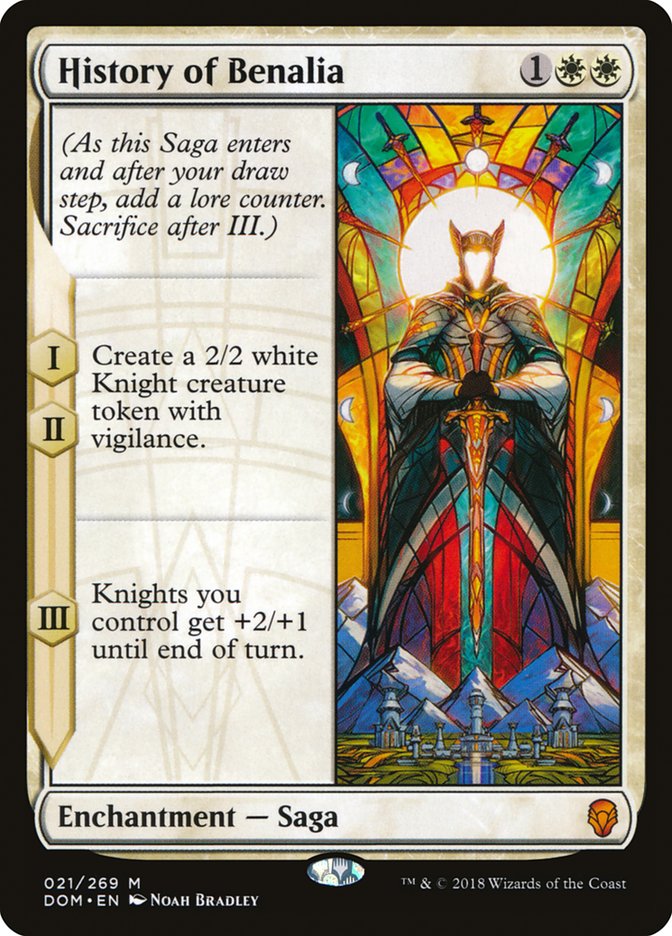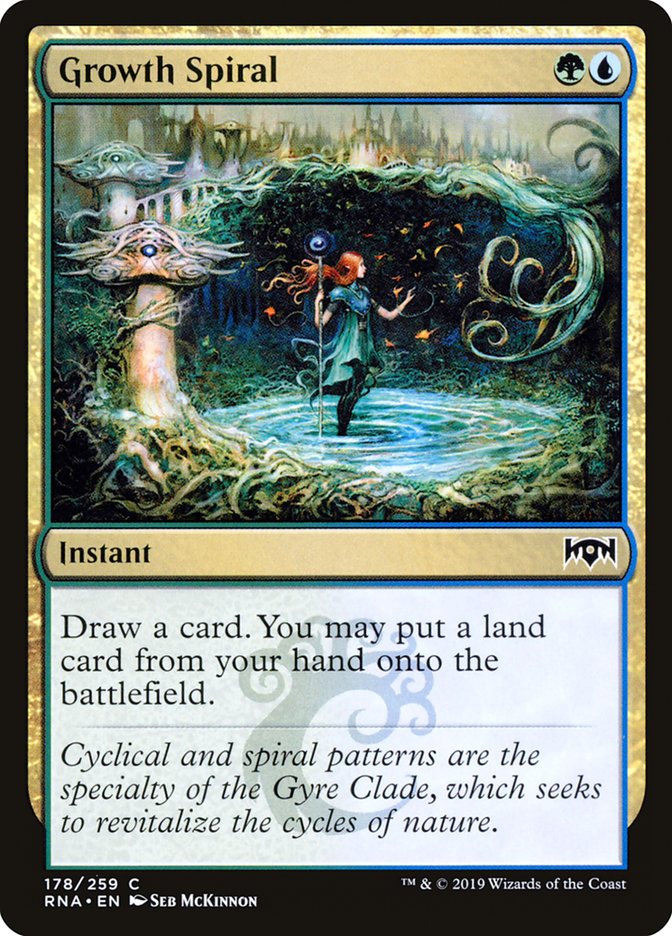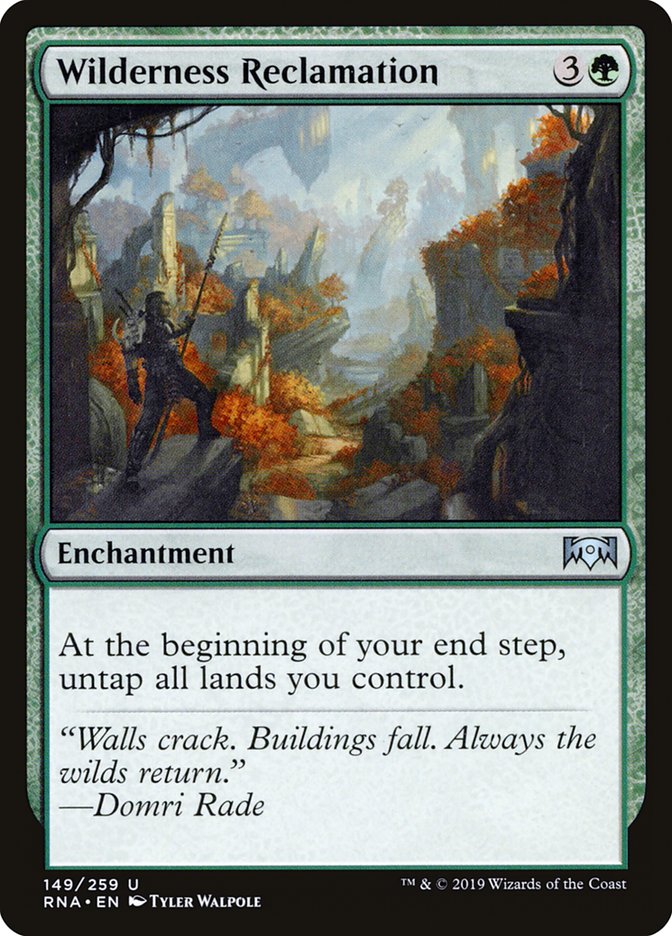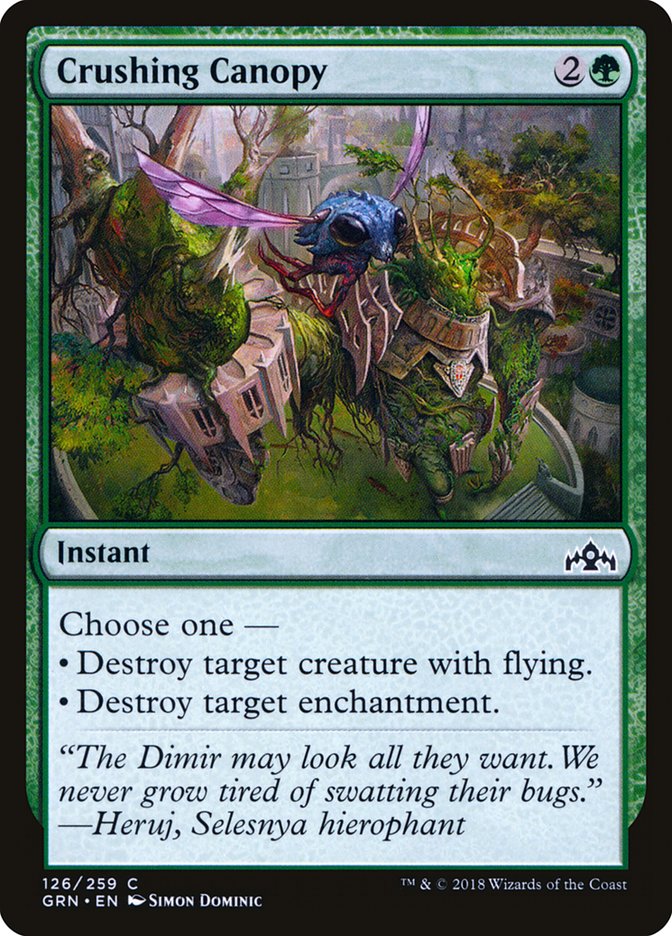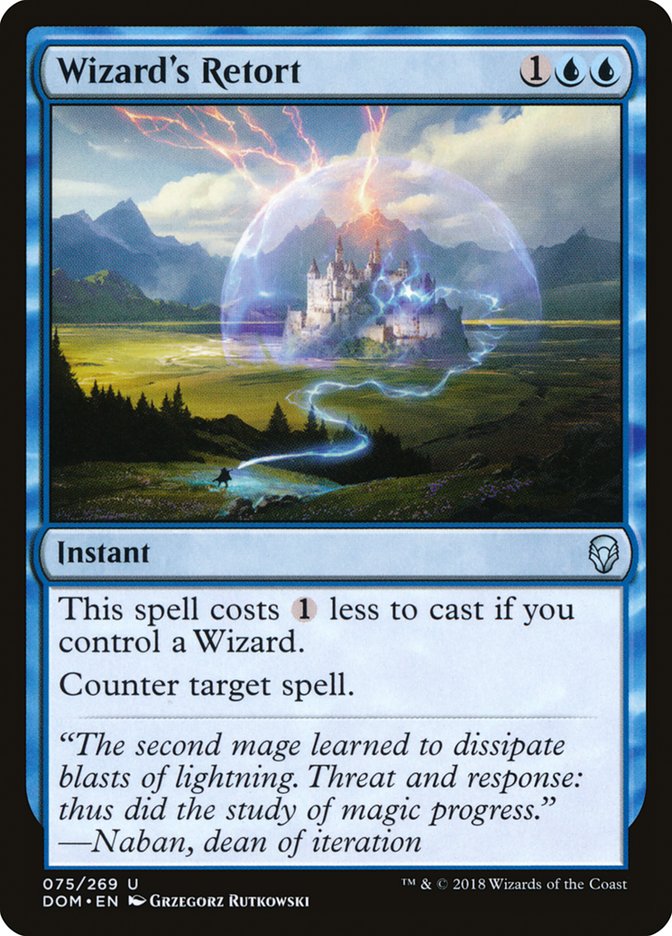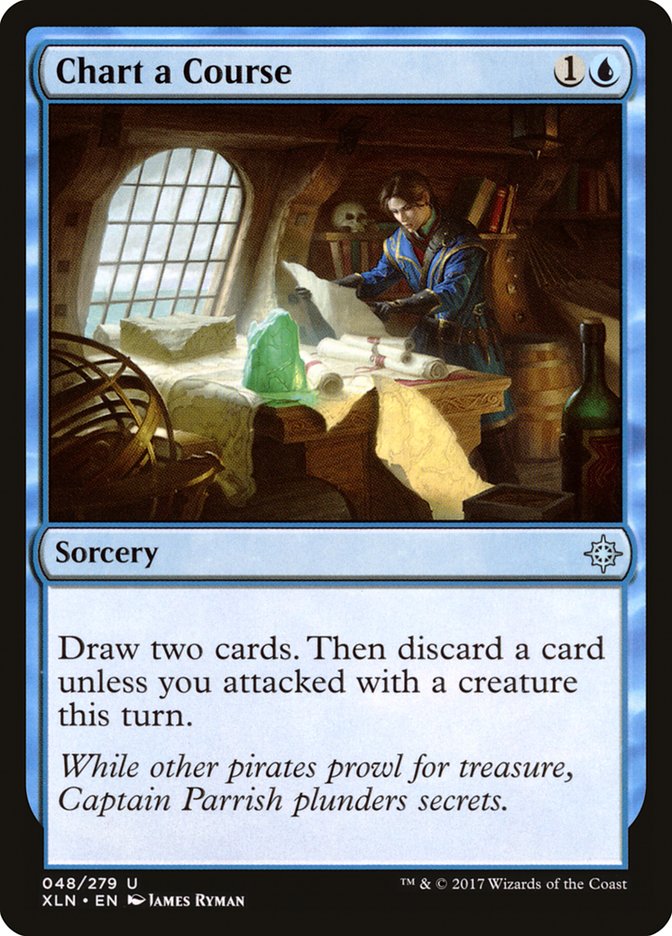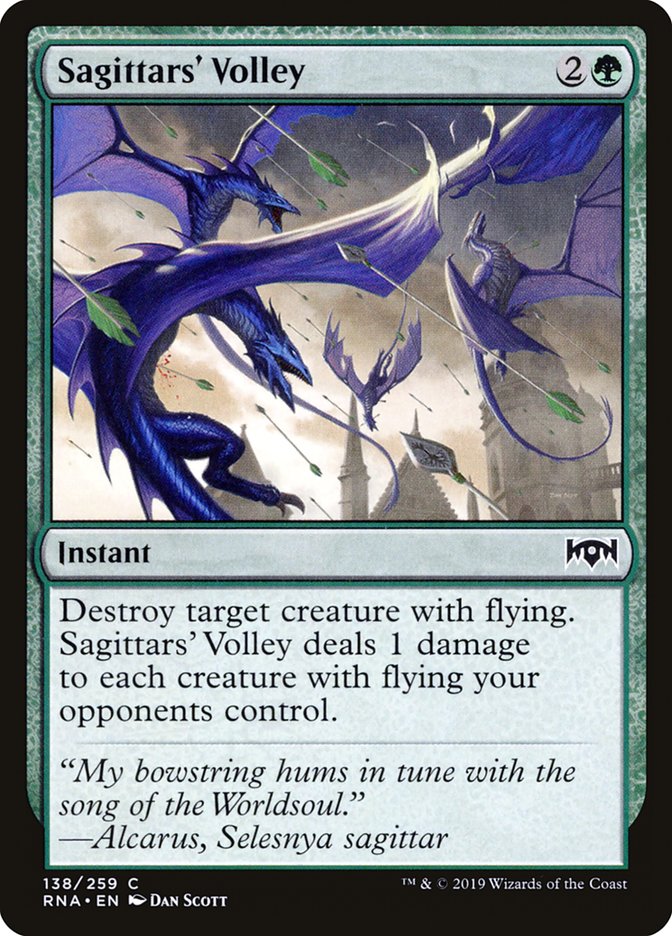Mono-Blue Aggro won #SCGDFW. Mono-Blue Aggro holds the #1 Mythic slot on Magic Arena.
Spells (22)
- 4 Opt
- 3 Spell Pierce
- 3 Chart a Course
- 2 Dive Down
- 4 Curious Obsession
- 1 Blink of an Eye
- 4 Wizard's Retort
- 1 Essence Capture
Sideboard

How does anyone beat Mono-Blue Aggro? Here’s how everyone beats Mono-Blue Aggro.
Sultai Midrange Versus Mono-Blue Aggro
Creatures (24)
- 4 Llanowar Elves
- 1 Hostage Taker
- 4 Wildgrowth Walker
- 4 Merfolk Branchwalker
- 4 Jadelight Ranger
- 2 Ravenous Chupacabra
- 4 Hydroid Krasis
- 1 Incubation Druid
Planeswalkers (4)
Lands (24)
Spells (8)
Sideboard

There are technically three routes to victory for Sultai Midrange. It can stick early Jadelight Rangers or Wildgrowth Walkers that just outpace Mono-Blue Aggro’s clock when backed by some removal, it can literally kill everything the Mono-Blue Aggro deck casts and win however it wants, or it can cast a Hydroid Krasis and brick wall the majority of the Mono-Blue Aggro deck before winning however it wants with all these extra cards.
Note: The “kill everything” draw really relies on them drawing blank cards like Island, late Spell Pierce, and Merfolk Trickster with no other pressure. If they’re steady on lands and doing stuff, you should probably find a different endgame.
At the core, there’s one route to victory for Sultai Midrange. Sultai has a tendency to force each game to be about your opponent’s best cards trying to overcome a solid ball of consistent stuff. The Mono-Blue Aggro matchup is no different.
If Mono-Blue Aggro gets an uncontested threat, it wins. If Sultai Midrange can keep that from happening for a reasonable time, it wins. Either that means their threat is too late to race Jadelight Ranger, or Sultai gets time to set up lands and line up all its removal, or the huge Hydroid Krasis has resolved and nothing Mono-Blue Aggro does really matters.
If your opening hand doesn’t effectively execute one of the big three ways to win in a way that mitigates some of their possible threat openings, what are you doing with it? Lands and spells won’t win the game, and you don’t need that many lands and spells to beat them if they do something good.
This probably applies to most decks in the Mono-Blue Aggro matchup, so just pretend I keep telling you this every time.
The first bar to clear is Curious Obsession. Honestly, you can’t always do that. There are only so many removal spells that you can maindeck that cost two. On the play Wildgrowth Walker and Jadelight Ranger can race a Curious Obsession, or you can sometimes Llanowar Elves into Ravenous Chupacabra, but often the hope for Sultai Midrange is that Curious Obsession on Turn 2 just doesn’t happen.
Crap, I just told all the Mono-Blue Aggro players the secret. They should just jam early Curious Obsessions into Sultai Midrange and assume the best.
If you’re on the slower plans of “live to Hydroid Krasis” or “kill all their stuff,” you must position your removal well to actually answer their real threats.
Remember this pattern: End step try, untap, fire again.
If you’re at parity you can often use this to constrict their mana on the turn they deploy their threat, so often if you know you will win the “eventually” game but could lose in the medium term if you give them a window, you don’t have to take actions just yet. This is really true if you can fire your first removal spell through a Spell Pierce, forcing them sometimes to tap down for Wizard’s Retort and cutting their options to stop your follow-up. Their chip shots actually do become threatening if a big creature connects once, so again patience can be rewarded if it means they don’t hit with a Tempest Djinn or an adapted Pteramander.
Remember that Ravenous Chupacabra can’t be Spell Pierced. That’s a nice one.
If they have a Siren Stormtamer, that can prompt a preemptive end step, untap, retry action to open the gates for the next kill spell.
Again, they can’t always have it. Sometimes you just have to fire and hope.
If you’re on the quick plan and producing threats, the plan against counterspells is to just jam. The Mono-Blue Aggro deck is going to win if it has everything, so you must assume they just don’t. The one exception is if you’re so far ahead the only way to lose is give them an extra spell in graveyard for Pteramander.
The rule for sideboarding is simple. Does it cost less than five and probably result in a creature dying? In. Does it cost more than five or not kill a creature? Probably out, unless it’s Hydroid Krasis.
Duress is great because it lets you turn your future countered kill spell into an actual kill spell. Negate is bad because you couldn’t pay for Spell Pierce anyway, so where are you getting two mana from? Thrashing Brontodon is bad because a four-mana Disenchant is too slow to matter against Curious Obsession and a three-mana 3/4 isn’t that good either.
Their sideboard is nothing new. Surge Mare is just a creature. Entrancing Melody is just another expensive way to make you play a kill spell. Jace, Cunning Castaway is kind of a new thing, but it’s terrible against the Sultai beatdown draws. Even when that Jace is good, it’s just the mediocre kind of good.
Overall: Mulligan do-nothing hands, play to your prescribed plans, accept you might die if they have it all. Sultai is still in the same 45-55% range Golgari-based midrange decks always settle into.
Esper Control Versus Mono-Blue Aggro
Planeswalkers (4)
Lands (26)
Spells (30)
- 4 Absorb
- 3 Mortify
- 2 Negate
- 3 Vraska's Contempt
- 2 Search for Azcanta
- 2 Moment of Craving
- 1 Cast Down
- 3 Thought Erasure
- 2 Chemister's Insight
- 2 Precognitive Perception
- 2 Cry of the Carnarium
- 3 Kaya's Wrath
- 1 Warrant
Sideboard

Esper Control does not have multiple ways to win against Mono-Blue Aggro. It just has the “kill everything” plan. It’s pretty good at that though. Despite the finals of #SCGDFW going against Esper Control, the matchup felt very winnable for Esper.
Again, I’m largely going to ignore discussion of the Curious Obsession games. Johnathan Hobbs’s list was about average on ways to interact with the aura, and I love the ability to Negate it on the play. Warrant is another nice pickup here as the “how do I actually kill Nexus of Fate” slot.
This is a good first time to point out a line that comes up a lot: if you have a choice, kill the Curious Obsession, not the 1/1 creature. You can’t Dive Down or Siren Stormtamer to save an enchantment.
Let’s talk about what Esper Control’s “eventually” plan looks like. Eventually, Esper Control casts removal spells every turn until forever. Eventually, it draws enough lands to make Spell Pierce a blank draw, but not too many. Eventually it casts a card draw spell on a turn it’s only under light pressure, and it just has more material to work with than Mono-Blue Aggro and wins.
Teferi, Hero of Dominaria is a “very eventually” part of this plan. Much like Vivien Reid is not that good out of Sultai Midrange, Esper Control has better things to do than tap five mana for Teferi, Hero of Dominaria in this matchup. You technically need a way to win and Teferi is that, but you actually won the game long before that.
If Esper has anything resembling a beatdown draw, it’s Search for Azcanta. It’s everything you want to assemble inevitability. It helps you hit exactly the land drops you want to hit and then really turns the corner on card advantage.
Esper Control’s losses largely come from its mana. If it can’t cast the right spell on time because it doesn’t have WWBB or just drew too many lands and not enough spells, then Mono-Blue Aggro has the opening to win the game.
One part of this matchup that gives Esper Control room to work with is that Pteramander is really hard for Mono-Blue to adapt. Esper doesn’t have to let Mono-Blue efficiently ditch spells to its graveyard if it doesn’t want to and tapping down a large amount of mana to adapt often opens the window Esper Control was looking for to kill it. Really, nothing besides Tempest Djinn or Curious Obsession deserves an “oh crap, immediately do something” reaction until fairly late in the game. You have time to fire off Chemister’s Insight or leave up Absorb if the Mono-Blue Aggro player didn’t get real traction in the first turns of the game.
On paper it doesn’t look like either side gains a lot from sideboards, but Esper Control definitely wins the exchange. Negate is more of the same that Esper Control faced down before, where Duress actually punches holes in the easiest Mono-Blue Aggro wins.
Overall: Esper Control wants good mana, Chemister’s Insight, and instant removal. If it keeps land-heavy hands with Teferi, Hero of Dominaria, it will die. If it keeps hands where the mana cuts its options in the midgame, it will die.
Izzet Drakes Versus Mono-Blue Aggro
Creatures (12)
Lands (21)
Spells (27)

This is one of the Gerry Thompson-described bad matchups for Mono-Blue Aggro.
There are a lot of ways for Izzet Drakes to keep Curious Obsession from getting off the ground. Spell Pierce might be the best one because it attacks the Aura and dodges Dive Down.
Ideally Mist-Cloaked Herald would help carry a Curious Obsession through blockers, but as Patrick Sullivan said this last weekend at SCG Dallas, the problem with that is Mist-Cloaked Herald is bad.
The key for Izzet Drakes is to not get so far behind that getting a Crackling Drake countered results in you dying. Having Enigma Drake early as the backstop is big, as is just being able to land a Pteramander early and churn into a 5/5 instead of tapping out for a spell.
Merfolk Trickster as an offensive tool doesn’t help the Mono-Blue Aggro deck that much, as it feels like most games the Izzet Drakes deck wins are shut down super early, but it is a reason for Izzet Drakes to act like a true control deck. If you try to race, they can Merfolk Trickster a Drake after attacks and block the now 0/4 non-flier down. This is also something to watch for when they attack Tempest Djinn into blockers. The similar Warkite Marauder, on the other hand, would be significantly more effective, as it’s a proactive answer to a resolved Enigma Drake, though it runs right into Dive Down.
Dive Down might seem blank, but the +0/+3 plays a key role in stopping Tempest Djinn. If Mono-Blue Aggro ever reaches a seven-power Djinn that gets blocked, Izzet Drakes probably wins because Mono-Blue drew all its lands. Izzet Drakes can easily produce a seven-power flier, though, so this trick is fairly asymmetric. The one spot where it often comes up is when Pteramanders fight, so keep that in mind before getting into single combat.
The sideboarded games of this matchup involve two haymakers. On your side, Niv-Mizzet, Parun is just lights out for the Mono-Blue Aggro deck. Entrancing Melody on their side is pretty good, but often in games where they hit that many lands without having already won via Curious Obsession, they haven’t done enough to make that swing matter a ton.
What makes your six-drop good and their five- or six-drop bad? The classic cantrip “problem” applies: the less selectively powerful your cantrips are, the closer your deck is to a virtual 52-card deck with a greater land percentage and the more likely you’re to end up cantripping into a pile of lands. Izzet Drakes doesn’t have that many more cantrips than Mono-Blue Aggro, but it’s way happier to be the deck just sitting there and casting them because its eventual plan is better.
Instead of random dingbats, it just has more of the high-toughness fliers that decide these games. It has Shock instead of Mist-Cloaked Herald. If both players just spin their wheels, Izzet Drakes will win, and Niv-Mizzet, Parun is just the format declaration of that. Entrancing Melody is Mono-Blue Aggro trying to recoup reasonable value by playing Izzet Drakes’s game. They can’t always control their draws and sometimes must play that game, so the card will be in their deck; it’s just not a reliable game-breaker unless it targets Pteramander.
Overall: Izzet Drakes is just here to stick the fastest brick wall. That’s enough to bridge to the next one, and the game ends there.
Mono-Red Aggro Versus Mono-Blue Aggro
Creatures (20)
- 4 Fanatical Firebrand
- 4 Ghitu Lavarunner
- 4 Goblin Chainwhirler
- 4 Viashino Pyromancer
- 4 Runaway Steam-Kin
Lands (20)
- 20 Mountain
Spells (20)
Sideboard

The Mono-Red Aggro matchup against Mono-Blue Aggro is almost entirely defined by presentation of creatures.
In the back of the Mono-Red Aggro player’s mind is Tempest Djinn. It’s the one card Mono-Blue Aggro can really leverage to go over the individual spells Mono-Red presents. This means that while Fanatical Firebrand is capable of trading for small things, it’s often more important as a “free” way to team up with a three-damage burn spell and threaten the Djinn.
Ghitu Lavarunner and all the red one-drops are largely mitigated by Merfolk Trickster. Throwing away bodies into a flash creature is just not ideal.
On the flip side, Mono-Blue Aggro can’t really overextend small things due to Goblin Chainwhirler. The actual Goblin isn’t that big of a threat, just a pressure point that Mono-Blue Aggro must respect.
Mono-Red Aggro has two threats that are near unbeatable for Mono-Blue Tempo. Runaway Steam-Kin is the threat unique to this matchup. The way Mono-Blue Aggro tries to constrain most decks is via mana and tempo, so not only does Runaway Steam-Kin go outside all the Mono-Blue defenses, it overflows them with mana for game actions too. Turn 2 Steam-Kin on the play is close to lights out.
Rekindling Phoenix is a card that probably deserves more play right now. It’s just a Crackling Drake that Tempest Djinn doesn’t even trade with. They can Merfolk Trickster, but it just brings them back to parity. If they attack, they lose. If they just sit there, their deck of crappy tempo spells will lose. The key is finding ways to pressure them into letting it resolve and Mono-Red Aggro has a bunch of those.
You may notice a lot of Mono-Red Aggro decks not playing Rekindling Phoenix. They should fix that, because their job isn’t getting easier with sideboards involved. They get Lava Coil, while Mono-Blue gets actual tools. Surge Mare is just another excuse to go to alternate win conditions that don’t get bogged down on the ground. Exclusion Mage means Mono-Blue Aggro is playing back at you too, so you can’t expect the same straightforward threat-based victories you had Game 1.
Overall: Gerry and Bryan were on point. Mono-Red Aggro should be able to crush this matchup, but the current lists have started cutting their best tools for nonsense like Risk Factor.
Azorius Aggro Versus Mono-Blue Aggro
Creatures (29)
- 4 Ajani's Pridemate
- 4 Adanto Vanguard
- 3 Snubhorn Sentry
- 4 Benalish Marshal
- 4 Dauntless Bodyguard
- 4 Leonin Vanguard
- 4 Healer's Hawk
- 2 Deputy of Detention
Lands (20)
Spells (11)

The question here isn’t how whatever White-plus-Splash Aggro beats Mono-Blue Aggro, but how it can possibly lose.
The important thing to notice is that all the Mono-Blue Aggro threats are slow compared to what Azorius Aggro produces. Venerated Loxodon is nine free power. If Mono-Blue doesn’t pump the brakes and try to make Azorius Aggro play closer to its pace, it’ll just die. Azorius Aggro simply has to cast some spells and be ahead enough to force Mono-Blue Aggro to take action, so keep hands that do that.
See point one of every Mono-Blue Aggro matchup. Just because their deck has “bad” cards, that doesn’t mean your hands should be bad.
One way Mono-Blue Aggro can get a lot of time back is by eating an attacker with Merfolk Trickster. This is actually a pressure point Azorius Aggro can exploit. If you care about a Benalish Marshal resolving, shove your Hunted Witness in and bait the play. If you care about Adanto Vanguard attacking, push a spell at them and see if they counter it first. Then just don’t make the blowout play if it looks obviously bad for you and you’re already ahead.
Once you sideboard, Tocatli Honor Guard in small quantities (it’s still just a 1/3) helps a lot here. It also covers their sideboard Exclusion Mages as a bonus.
History of Benalia is slow and bad here. It might just be slow and bad everywhere else too, but Spell Pierce makes it really obvious. Don’t lean on it and don’t keep hands because of it.
These are cards Mono-Blue Aggro will have. They are good, but not game-breaking. Don’t get tricked into messing your deck up. Don’t Negate. Don’t play expensive threats. Upgrade your bad two-drops and clunky spells into slightly better two-drops and removal. Stay lean and bash.
Overall: Mono-Blue Aggro has a limited number of ways to blow out Azorius Aggro. One of those is the Azorius Aggro player deciding to not do the baseline Azorius Aggro stuff. One-drop, two one-drops, bash. Repeat.
Nexus of Fate Versus Mono-Blue Aggro
Creatures (7)
Lands (26)
Spells (27)

Spell Pierce? It’s over. Nexus loses. Are we done here?
Don’t try to get into interactive fights with Mono-Blue Aggro. That’s just what they want, as it means you spend more time letting them chip damage in. The hands where Nexus of Fate decks beat Mono-Blue Aggro are the ones where they are just a ramp deck that hopes their spells resolve. If you Growth Spiral, they might be tapping out to produce their clock when you cast Wilderness Reclamation and then everything will fall apart for them.
No, Crushing Canopy won’t save you. No, an expensive sweeper won’t either. They have text, but the fundamental issue is still there. Your best bet might be literal Wall of Vines, and even then, that’s just one card and not a plan.
Just remember the same thing as Sultai: Mono-Blue Aggro’s biggest enemy is often its own draws. They can’t always have it. Make them choose between having it and doing stuff. Sometimes they will fail.
Overall: Don’t say you didn’t deserve to get Spell Pierced.
Mono-Blue Aggro Versus Mono-Blue Aggro
Everything I said about the Izzet Drakes versus Mono-Blue matchup applies. Except no one has Shock. Or Crackling Drake.
Early Curious Obsession is lethal, and there isn’t a way to really recover except get luckier and draw more Tempest Djinns.
Merfolk Trickster is probably the third most important card in the mirror behind Curious Obsession and Tempest Djinn. Early, it’s the one way to stop a resolved Curious Obsession. If there’s a lone attacker, it can tap it on upkeep and make the Curious Obsession fall off, and if there’s a backup attacker, it can drop the flier with the Aura and trade. Merfolk Trickster is also the way to kill Tempest Djinn that isn’t named Tempest Djinn, just like it kills attacking Enigma Drakes.
Because being on the back foot in the mirror is really only recoverable with Merfolk Trickster. Anything expensive loses a ton of value. Holding up Wizard’s Retort only works when you’re winning. Chart a Course only works if you have valid attacks and extra mana to not defend with. When looking to sideboard cards out for interaction, start here.
Overall: Win the die roll and draw well. The tricks exist to flip a game, but they aren’t that great.
Is Mono-Blue Aggro the Best Deck?
No.
Every already viable deck in Standard has a good plan to beat Mono-Blue Aggro. It’s still full of a lot of low-power cards and is prone to all the monocolor aggro issues. If you aren’t on the battlefield early or draw too many lands, that’s a wrap. If they’re on the play and curve out, things aren’t great.
Mono-Blue Aggro just hit at a nice inflection point and exploited everyone. Izzet Drakes was a largely online phenomenon that didn’t breach real life. Sultai Midrange and Esper Control started sideboarding circles around each other, and Azorius Aggro took the spotlight for sideboard aggro hate.
You can just play a normal deck, trim your curve a bit, know a plan, and put up a good fight.
The draft commons really aren’t needed.


